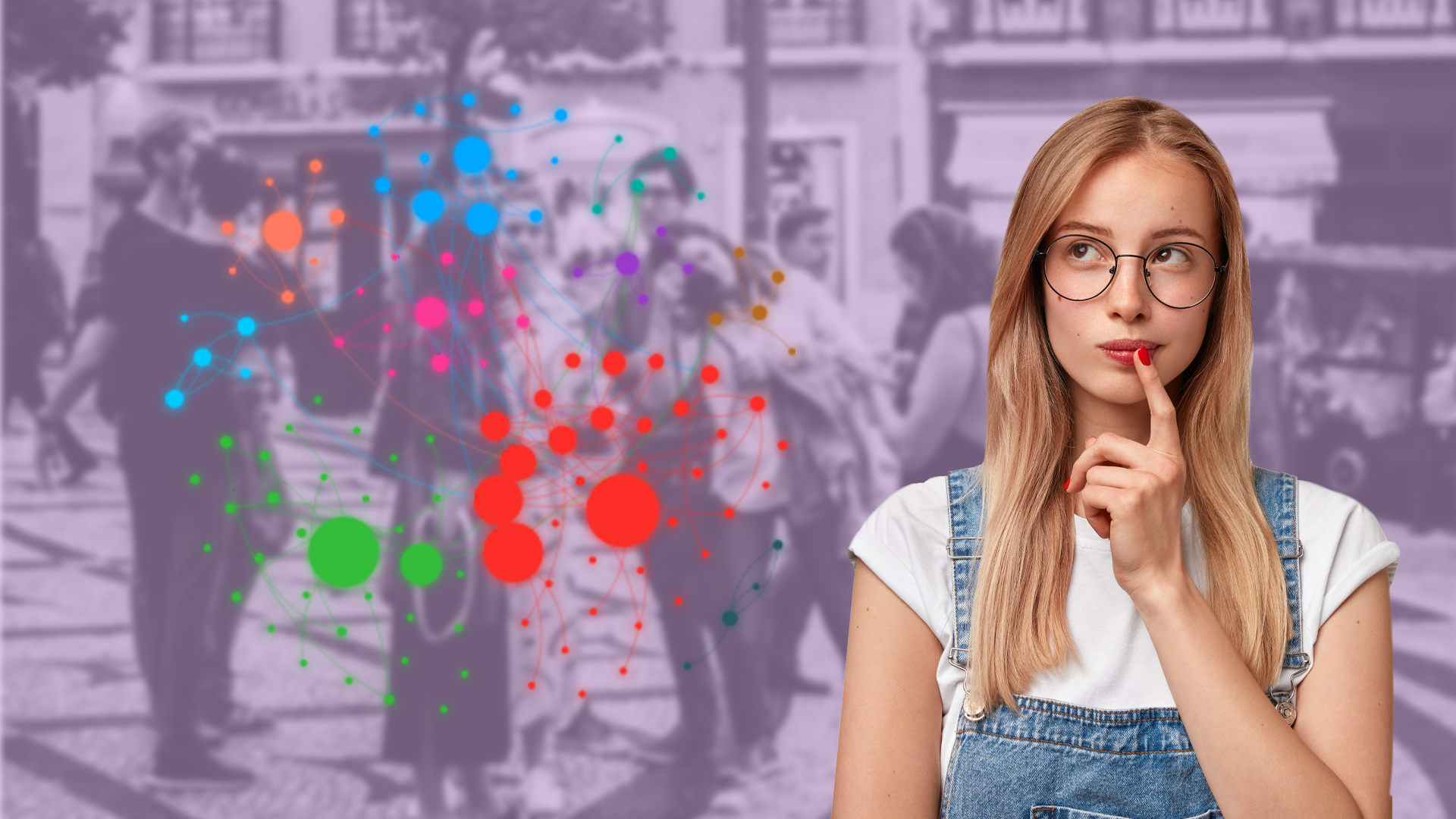Why should you segment your target market when looking for influencers?
Since we started talking using social data for influencer marketing, there are many cases that we have dealt with, in the different phases of marketing campaigns in general and influencer marketing in particular.
One of the most remarkable benefits of using social data in influencer marketing campaigns is the relevance when finding those who are influential for the audience in question. After identifying the audience using Audiense, through social intelligence we can find the most unique influencers for that target audience, eliminating the more general and common to the mass profiles from the influencers panel.
Among the trends of 2019 predicted by some of the most recognized marketers in the industry is to put the audience, once and for all, at the center of the (influencer) marketing strategy, instead of the brand or the product. In-depth knowledge of the target audience is essential to creating customer centric strategies, including their tastes, interests, motivations and affinities. The analysis of social data allows you to obtain these type of insights, which will be key when it comes to informing the most intelligent strategies.
Why you should segment your target market when looking for influencers
Simply put: it's about knowing in depth the audience and putting it at the center of the strategy, reaching it with the message that those individuals are interested in, not the one that interests and focuses on the brand. The message must be relevant and will be delivered more effectively if it is done by someone with whom the consumer has an affinity.
A brand of sports equipment will have a broad target audience that will be interested in sport in general terms, but among that mass of consumers will be different subgroups that will have a predilection for different sports disciplines ... Why are you going to use the voice of an F1 driver to speak to a ski enthusiast?
Let's see a practical example of an analysis we have done this week... After the latest edition of one of the technological events of the year, CES 2019 that took place last week in Las Vegas, we decided to analyze their audience to see what we could discover...
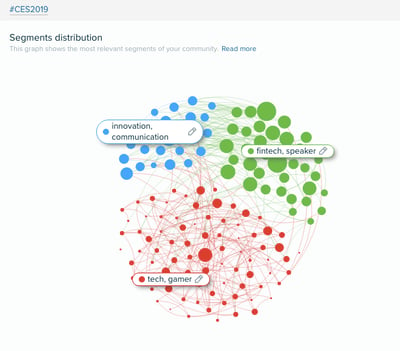 Within the audience of the event, interested in business and the technology industry, we discovered three main segments with more specialized interests: the tech-gamer segment, the fintech-speakers segment and the innovation-communication segment.
Within the audience of the event, interested in business and the technology industry, we discovered three main segments with more specialized interests: the tech-gamer segment, the fintech-speakers segment and the innovation-communication segment.
If we look for influencers for the full audience of the event, we get a panel of influencers headed by important figures in the world of technology businesses such as Elon Musk, Bill Gates and Tim Cook.
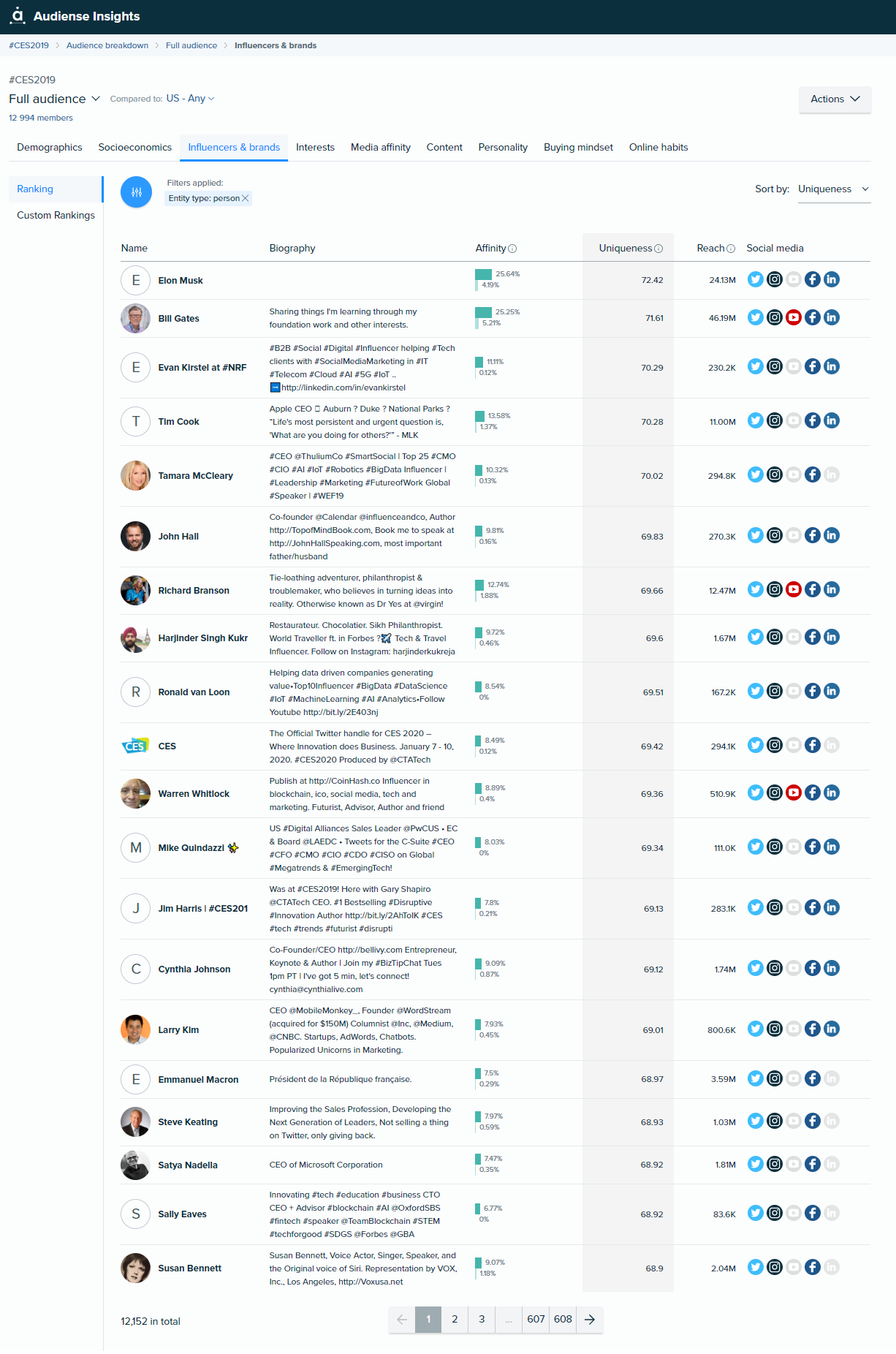
But what happens if we focus on each of the segments and look for influencers for those specific groups? Influencer panels vary, each one depending on who have been identified as the most unique influencers for each of these segments, based on their affinity for those influencers (that is, their interests). You can do all of this whilst also having the ability to filter these influencers depending on whether your strategy is focused on macro, micro or even nanoinfluencers.
Thus, for the tech-gamer segment, which is the largest within the total audience and therefore we could say the most "generalist", we discovered that these profiles would be the influencers with the greatest affinity for that group.
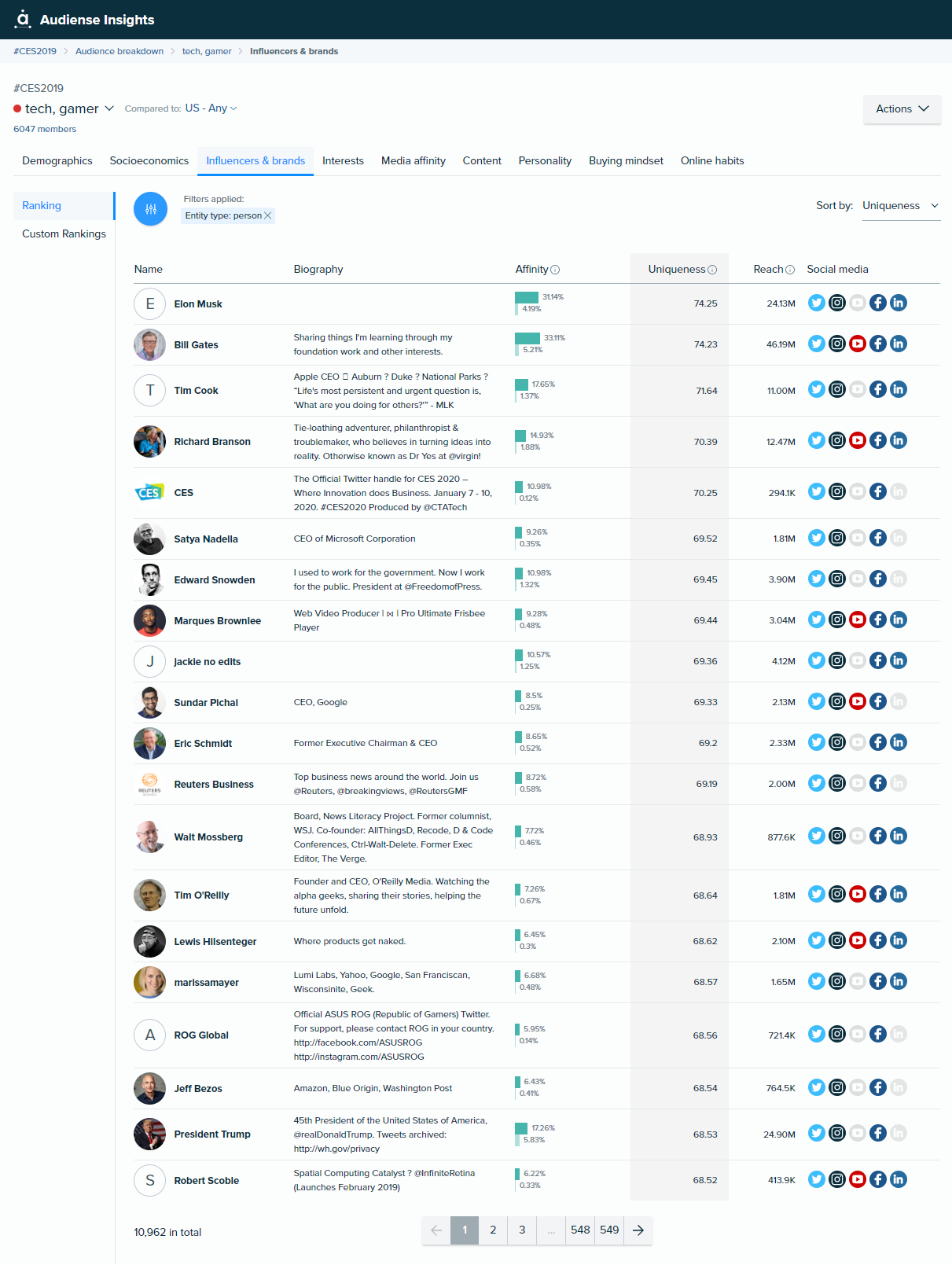
When analyzing the fintech segment, we see that the influencers identified are closely linked to the world of technological businesses, CEOs and founders of technology companies.
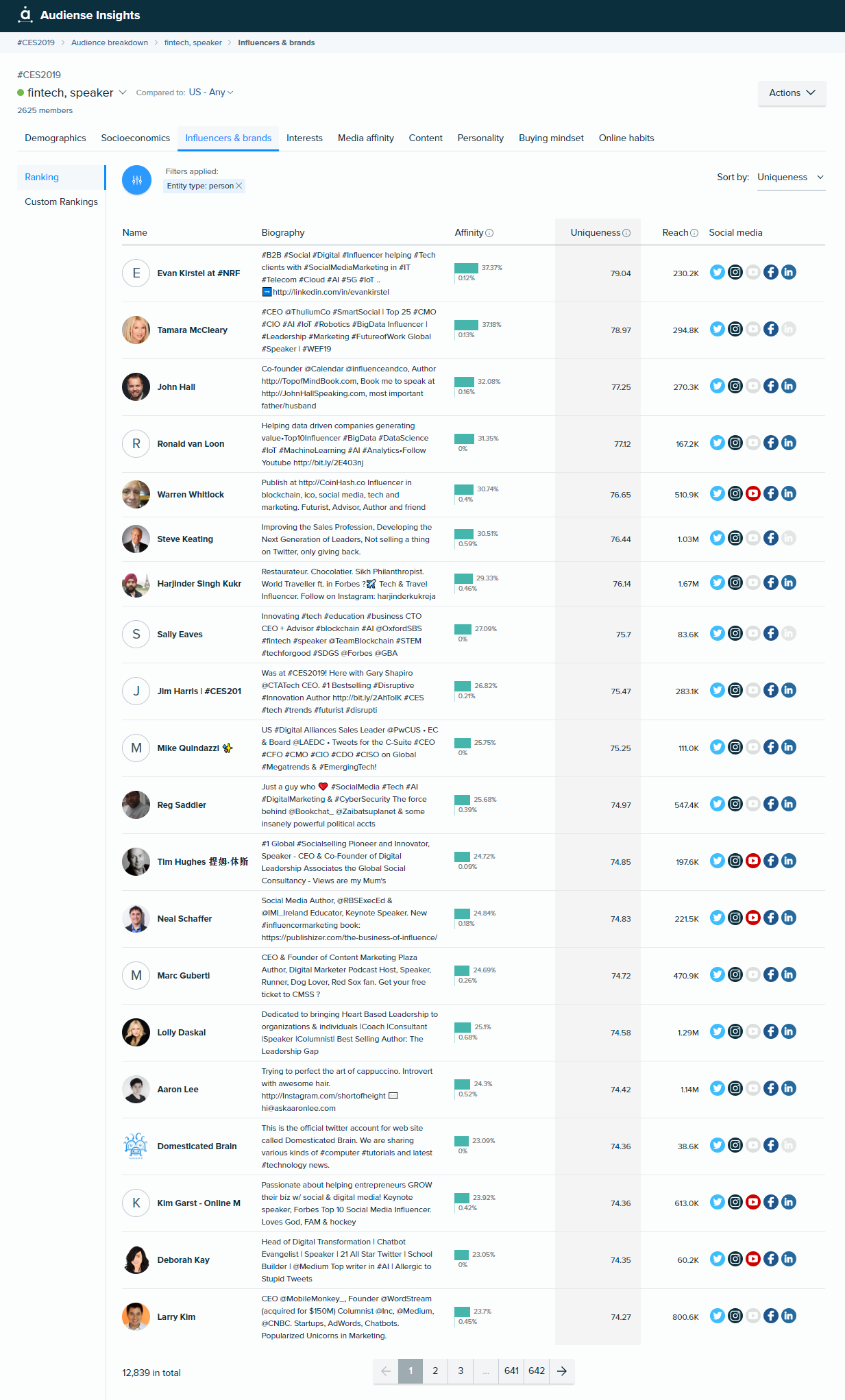
For members of the innovation-communication segment, the influencers are people with a more directorial profile in areas of innovation and communication, and they have a bold French character since 66% of the users that make up this segment are from France.
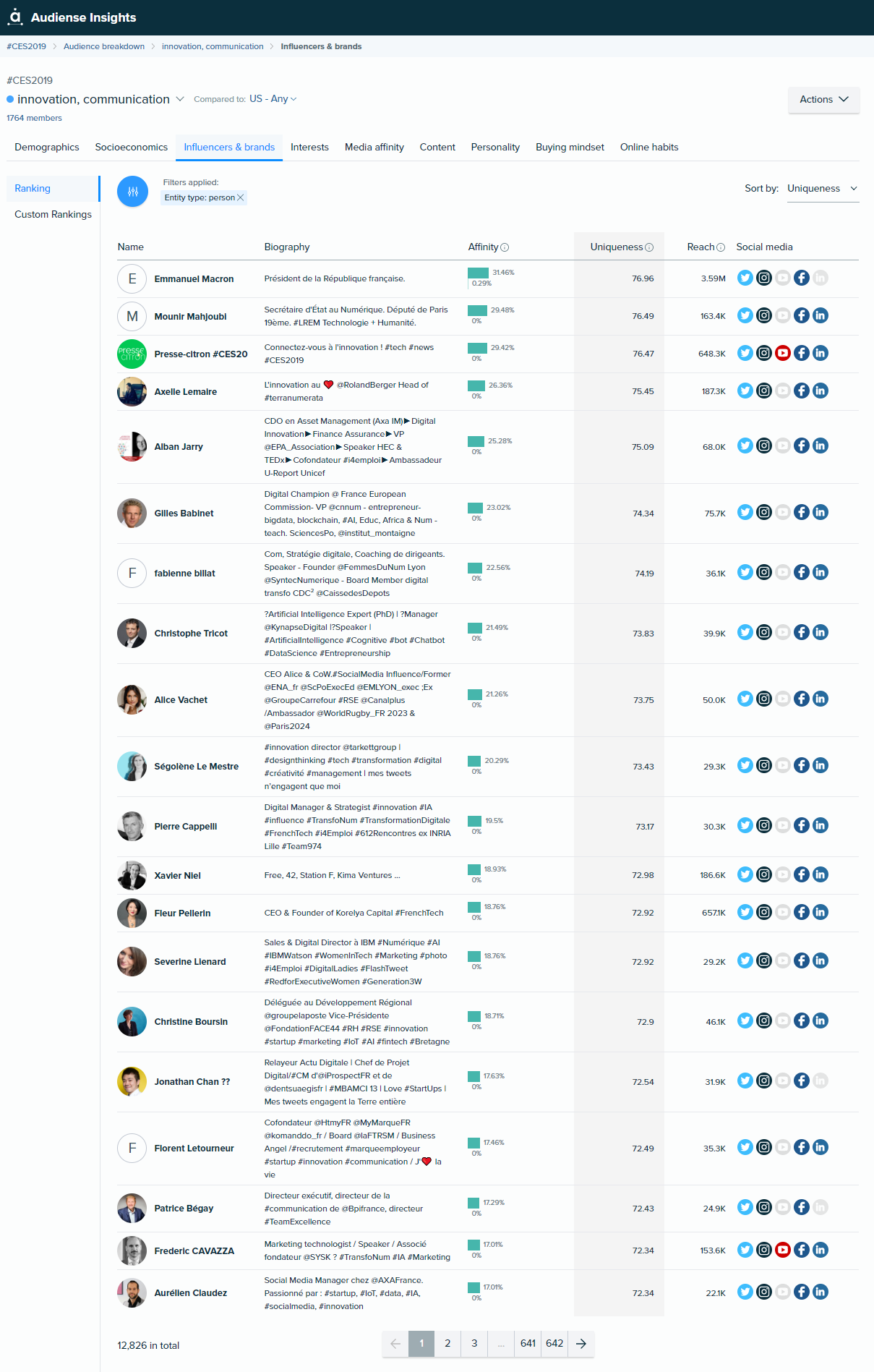
But... what if we analyzed each of these segments? We would identify new sub-segments, which would highlight new niche influencers even for these new groups. For example, when generating an audience intelligence report of the fintech segment, we have discovered a subsegment that we call IoT and AI (Internet of Things and Artificial Intelligence) whose main influencers are experts in the field.
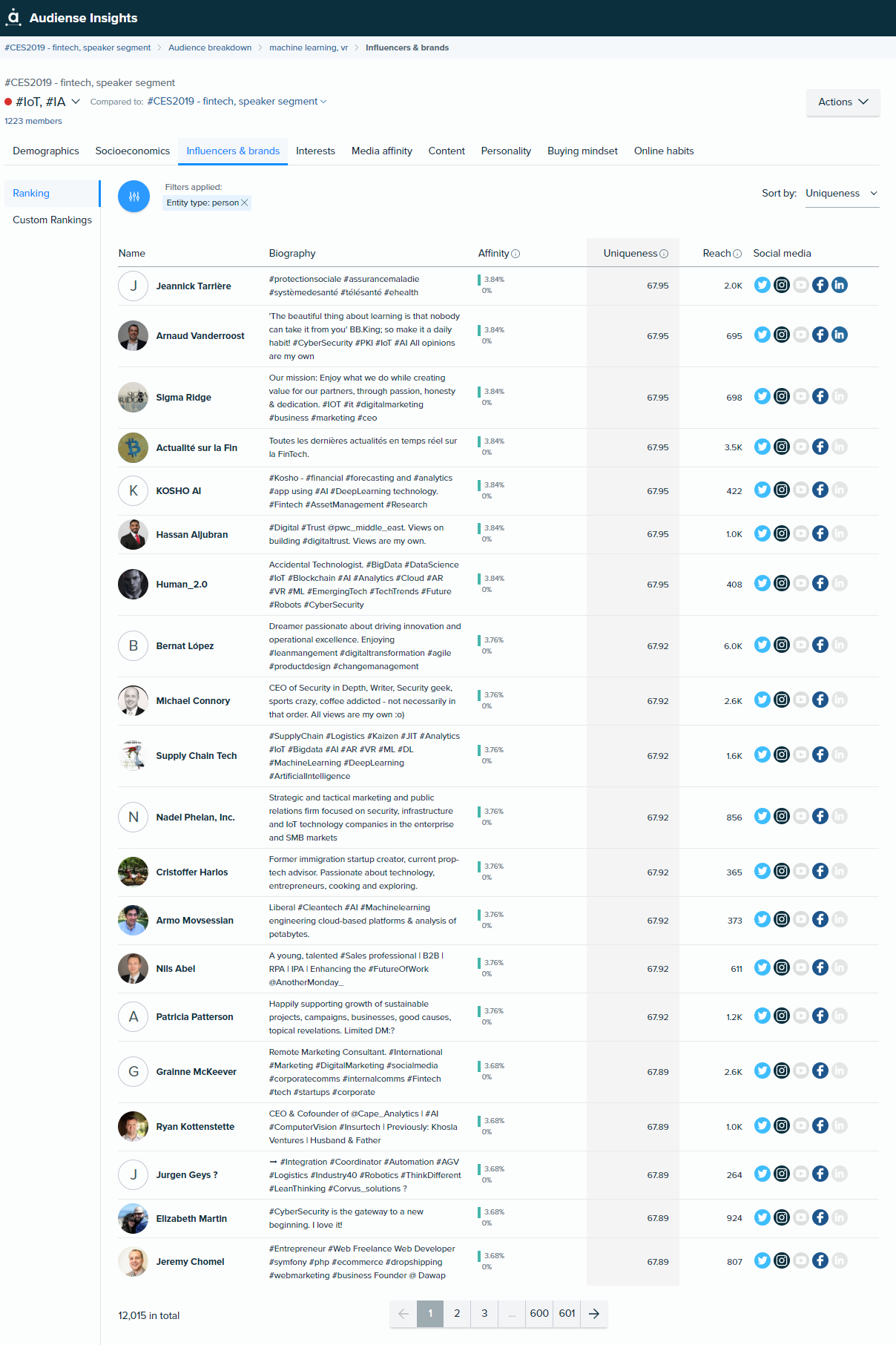
In short, segmenting your audience when you are looking for influencers allows you to:
- Understand the segments of which your audience is made up.
- Have an in depth understanding of each of the groups: their interests, motivations, affinities…
- Identify the most relevant and unique influencers for each of these segments and sub-segments.
Enabling you to put your audience at the center of your strategy and reach them with the right message through the right influencers in the right media.
And you, do you want to develop a strategy focused on your audience and find the most relevant influencers for it and all its segments? Request a free demo of Audiense Insights and we will be happy to help you discover all that audience intelligence can offer you.




